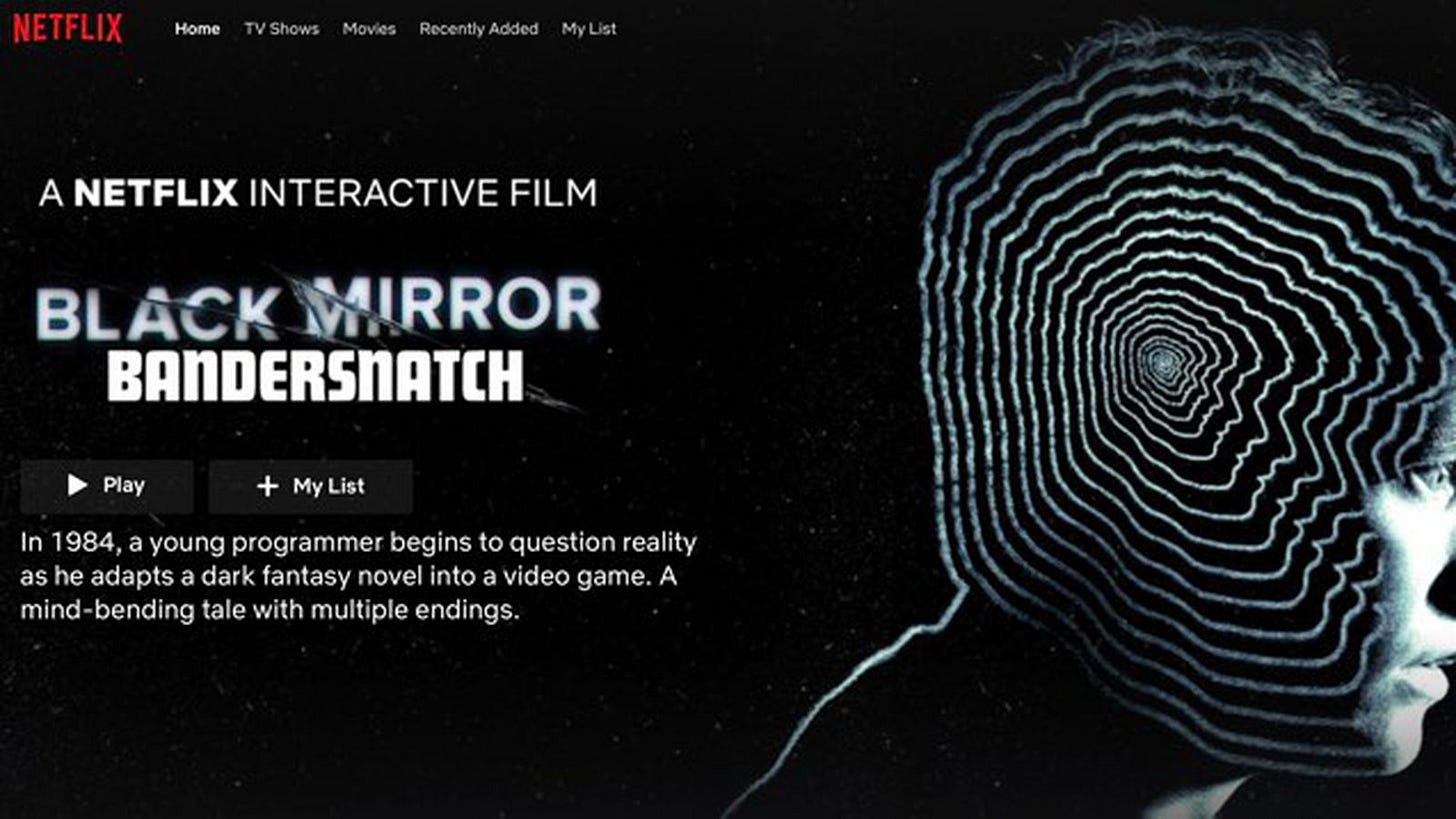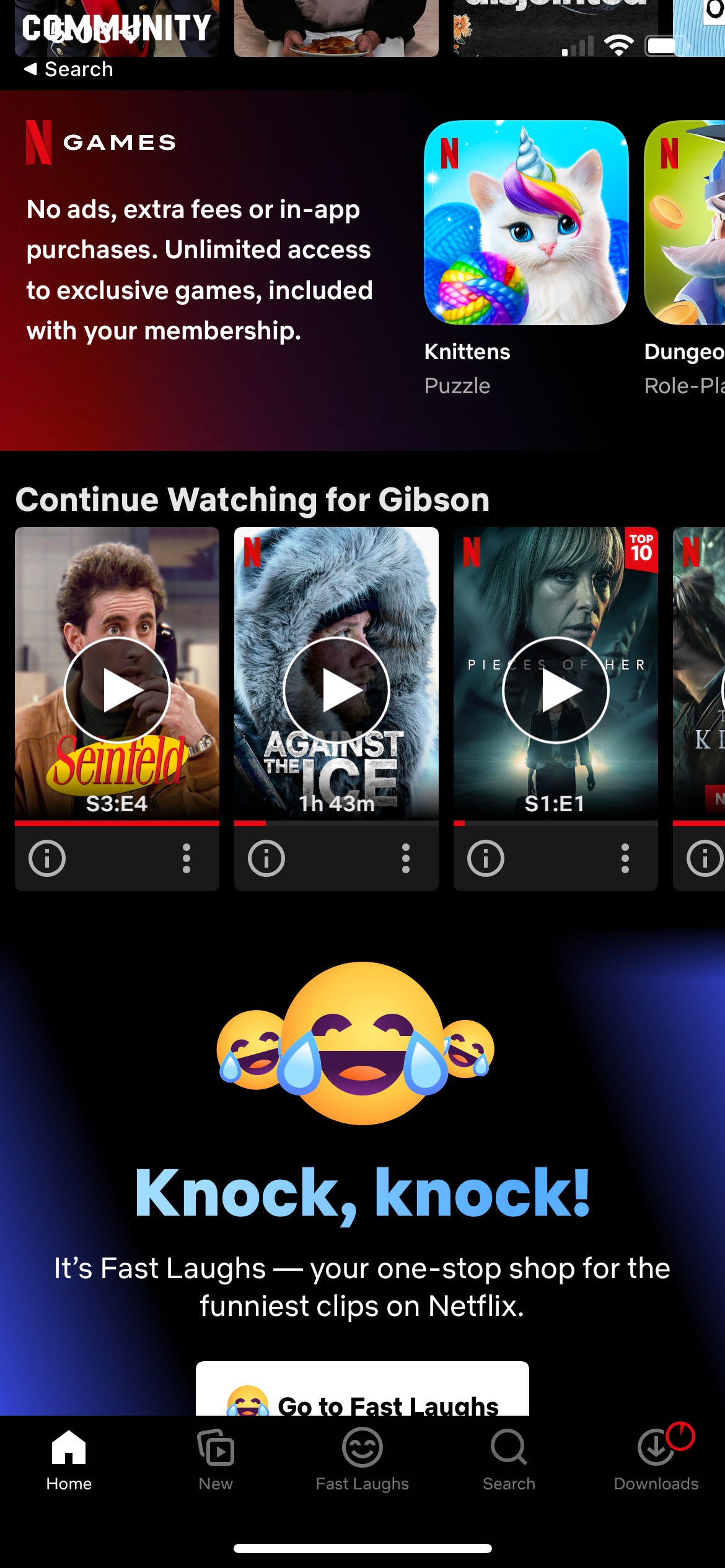Gib: Given you have been out of Netflix for a while, could you humor us and create a new Netflix vision based on where they are now? (Their GLEE is over, right?)
Short answer: The GLEE model for crafting a product vision is never done. As a product leader you always need to answer, "What's next?" For Netflix, gaming is their next expansion step.
Each month, I answer a few questions, drawing from my experience as VP of Product at The Learning Company, Mattel, Netflix, and Chegg. My free “Ask Gib” product newsletter now has nearly 10K subscribers.
A few quick notes, before I answer this question:
Click here to purchase my self-paced Product Strategy course on Teachable for $200 off the regular $699 price. (You can try the first two modules for free.)
Sprig powers my surveys and sponsors this newsletter. I use the money to buy “Ask Gib” hoodies and coffee mugs for highly active members.
To ask and upvote “Ask Gib” questions, click here.
All 60 of my “Ask Gib” essays are here.
You can now read this newsletter in the new Substack app for iPhone. (If you don’t have an Apple device, you can join the Android waitlist here.)
“Ask Gib” depends on word-of-mouth. The more subscribers, the more questions, and consequently, better, more relevant content. So please share this essay:
“Given you have been out of Netflix for a while, could you humor us and create a new Netflix vision based on where they are now? (Their GLEE is over, right?)
This is a fun question, and I appreciate that you know the GLEE model. I use GLEE to encourage product leaders to define a long-term product vision— a series of steps for how your product might eventually dent the universe.
Below, I:
Outline the Netflix GLEE model with a new, fourth expansion step
Demonstrate how to use the model to build alignment, and
Make a case for how games will delight customers in hard to copy, margin-enhancing ways.
1. The Netflix GLEE model
As a refresher, the product vision for Netflix, using the GLEE model (the first letters spell “GLEE”), is:
Get big on DVDs
Lead streaming
Expand international
Expand into original content
The GLEE model is never “done.” As a product leader, you always need to describe what’s next. Jeff Kagan, a financial analyst for Yahoo! explained the importance of identifying what’s next as he reflected on Yahoo’s failure to move beyond search:
The GLEE model encourages teams to ride one wave then identify the next wave to continue their growth.
Think of the steps in the GLEE model as hypotheses. In real-time, it’s unclear whether each step will work, the timing, or even the order of steps. Netflix began in 1998 as a US DVD by mail company. They hoped to launch streaming in 2002, but this didn’t happen until 2007. In 2006, Netflix experimented with original content but failed. But in 2013, “House of Cards” was a huge success and proved the value of original content.

I think that the next big step for Netflix is “Expand into gaming.” But if you had asked me a year ago, I might have said, “Expand into interactive stories.” At the time, Netflix was experimenting with interactive films like Bandersnatch. But today, it’s clear that Netflix’s ambition is much broader. They recently purchased two game studios and are now experimenting with mobile games on their mobile app:
Look closely at the Netflix app, and you’ll notice “Netflix Games.” They’re relatively low-quality games, but it’s analogous to the launch of streaming in 2007 when Netflix had only three hundred “steamy romance” titles. Note, too, the new “Fast Laughs” feature — another vector of Netflix’s game/entertainment hypothesis.
2. Building cross-functional alignment
Beyond outlining the potential steps in a long-term product vision, the GLEE model helps build cross-functional alignment by asking team members how much to invest in each stage. Here’s my guess today for the overall percentage of investment in each of Netflix’s current five stages:
Get big on DVDs (5%)
Lead streaming (20%)
Expand international (30%)
Expand into original content (35%)
Expand into gaming (10%)
Is there one correct answer? No. But it’s helpful to have teammates share their opinions on the right level of investment for each step, then debate one another to build consensus. This exercise forces teams to articulate how much they believe in each hypothesis, along with their assumption about how fast each transition will occur.
3. Delighting customers in hard to copy margin-enhancing ways
Games have the potential to delight Netflix customers in hard to copy, margin-enhancing ways. Initially, Netflix will offer games for free, with a growing focus on games based on their original content to extend their brands. As they did with Bandersnatch, they’ll develop new interactive technologies that are hard to copy and eventually provide these tools to other studios to build a hard-to-copy network effect— a sort of virtual network of studios. Once 10-20% of Netflix members engage in games, they’ll revise their pricing, offering games as part of higher-priced tiers. In the short term, the margin-enhancement opportunity is improved retention. But over time, the big margin opportunity is higher prices.
Netflix is patient. They launched streaming in 2007 as a bundle with their DVD by mail service and didn’t offer a streaming-only service until 2010. Then in 2011, Netflix offered separate DVD and streaming services for its US-based members. Netflix waited four years before they charged customers directly for their streaming service.
Conclusion
The GLEE model encourages product leaders to craft a long-term product vision. Sam Altman, Chairman of YCombinator, who has helped launch nearly 3,000 startups, including Stripe, Airbnb, DoorDash, Coinbase, Instacart, Dropbox, Twitch, and Reddit, talks about the importance of forming a long-term product vision with clear next steps along the way:
Be more ambitious. Then talk about that big vision & work relentlessly towards it. But always have a reasonable next step. You don’t want step one to be incorporating the company and step two going to Mars.
The product vision, defined by the GLEE model, helps a company articulate the next step on its path to denting the universe.
Thanks for your question.
One last thing!
Before you go, please complete the Four Ss:
1) Subscribe to this free newsletter. That way, you’ll never miss an essay:
2) Share this essay with others! By doing this, we’ll collect more questions and upvotes for more relevant articles:
3) “Star” this essay! Click the heart icon near the top or bottom of this essay.
4) Survey it! It only takes one minute to complete the Sprig survey, and your feedback makes my “Ask Gib” product newsletter better:
Thanks,
Gib




Gaming will do nothing for Netflix. Rather it's a sign they've lost direction. Netflix should never have attempted to create their own content because that made them a competitor to their previous partners, who provided the actual product users subscribed for: content. Now they've lost that content and replaced it with something much worse. Gaming will not help improve the quality of their content.